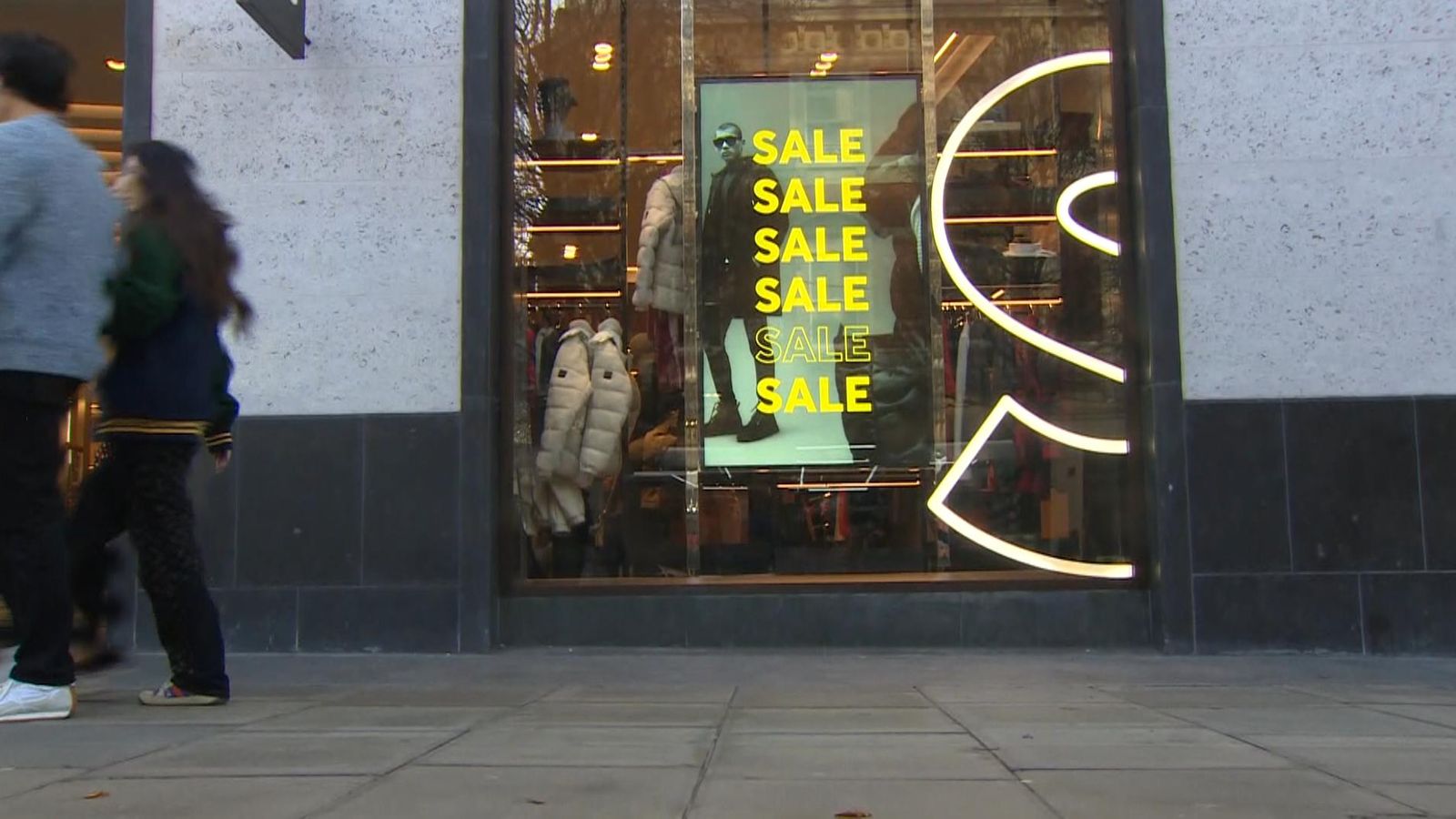The number of Boxing Day shoppers rose by 50% across the UK but remained below pre-pandemic levels as cost of living pressures weigh on consumers.
More shoppers were drawn to Boxing Day sales this year than last in all retail settings across the UK, according to data from retail analytics company Springboard.
By 12pm today footfall was up 50.1% on 2021, the company’s data showed. The biggest increase in foot traffic was recorded in high streets, with numbers of visitors up 59.4% on the same day last year, when non-essential retail was closed in many parts of the UK due to high COVID-19 case numbers.
Similarly, the numbers were up 46.6% in shopping centres and 33.7% in retail parks, Springboard said.
In central London the number of shoppers more than doubled and were up 139.2% on 2021, though the greatest increase was recorded in Northern Ireland where five times as many people attended Boxing Day sales.
Despite the improvement from last year the numbers lagged well behind the 2019 figures, before COVID-19 lockdowns began. Across the UK the number of Boxing Day shoppers are down 30.5% from the pre-pandemic year.
The gap between 2019 levels is lowest in central London, where the difference narrowed to 22.5% fewer shoppers this year than three years ago.
The overall rise in shoppers was witnessed more acutely in the east of England and in the greater London region where footfall was up as much as a third on other parts of the UK.
Before Christmas, footfall had been lower as rail strikes and snow deterred shoppers, official figures showed.
In the week up to 18 December, overall footfall dropped by 6% on the previous week and 23% of the 2019 level, the Office of National Statistics (ONS) said, quoting Springboard data.
High streets were the worst affected, with footfall down 12% during the seven days up to 18 December, from the week earlier.
During the week from Monday 12 December two 48 hour rail strikes took place, on 13, 14, 15 and 16 December.
Sales also began earlier this year with many major retailers discounting products before the traditional Boxing Day date.
Both Debenhams and John Lewis department stores rolled out price reductions a week ahead of normal schedule. Online retailer Asos also cut prices in advance of 26 December.
While snow has thawed, rail strikes are continuing and will last until 29 December. They will begin again in the new year on 3 to 7 January as the National Union of Rail, Maritime and Transport workers seeks improvements in pay and guarantees on jobs and conditions.
There was a surprise fall in retail sales recorded in November as shoppers remained cautious due to increased prices from inflation in the run-up to Christmas. Inflation stood at 10.7% in November.
The Office for National Statistics reported a fall in sales volumes of 0.3% compared to October when the effects of fuel sales were excluded.
Growth of 0.3% was expected by economists given reports of healthy interest, and spending, on goods during the key bargain-hunting period of Black Friday.
